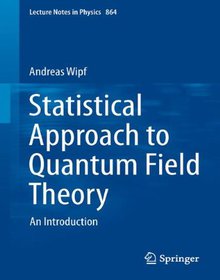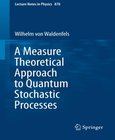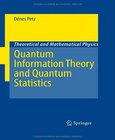Statistical Approach to Quantum Field Theory
An Introduction

Book Details:
| Publisher: | Springer |
| Series: | Springer |
| Author: | Andreas Wipf |
| Edition: | 1 |
| ISBN-10: | 3642331041 |
| ISBN-13: | 9783642331046 |
| Pages: | 420 |
| Published: | Nov 07 2012 |
| Posted: | Nov 19 2014 |
| Language: | English |
| Book format: | |
| Book size: | 8.31 MB |
Book Description:
Over the past few decades the powerful methods of statistical physics and Euclidean quantum field theory have moved closer together, with common tools based on the use of path integrals. The interpretation of Euclidean field theories as particular systems of statistical physics has opened up new avenues for understanding strongly coupled quantum systems or quantum field theories at zero or finite temperatures. Accordingly, the first chapters of this book contain a self-contained introduction to path integrals in Euclidean quantum mechanics and statistical mechanics. The resulting high-dimensional integrals can be estimated with the help of Monte Carlo simulations based on Markov processes. The most commonly used algorithms are presented in detail so as to prepare the reader for the use of high-performance computers as an experimental tool for this burgeoning field of theoretical physics.Several chapters are then devoted to an introduction to simple lattice field theories and a variety of spin systems with discrete and continuous spins, where the ubiquitous Ising model serves as an ideal guide for introducing the fascinating area of phase transitions. As an alternative to the lattice formulation of quantum field theories, variants of the flexible renormalization group methods are discussed in detail. Since, according to our present-day knowledge, all fundamental interactions in nature are described by gauge theories, the remaining chapters of the book deal with gauge theories without and with matter.This text is based on course-tested notes for graduate students and, as such, its style is essentially pedagogical, requiring only some basics of mathematics, statistical physics, and quantum field theory. Yet it also contains some more sophisticated concepts which may be useful to researchers in the field. Each chapter ends with a number of problems guiding the reader to a deeper understanding of some of the material presented in the main text and, in most cases, also features some listings of short, useful computer programs.
Download Link:
Related Books:
Geometric and Topological Methods for Quantum Field Theory
Aimed at graduate students in physics and mathematics, this book provides an introduction to recent developments in several active topics at the interface between algebra, geometry, topology and quantum field theory. The first part of the book begins with an account of important results in geometric topology. It investigates the differential equation aspects of quantum cohomology, before moving on to noncommutative geometry. This is followed by a further exploration of quantum field theory and gauge theory, describing AdS/CFT correspondence, and the functional renormalization group approach to quantum gravity. The second part covers a wide spectrum of topics on the borderline of mathematics and physics, ranging from orbifolds to quantum indistinguish...
A Measure Theoretical Approach to Quantum Stochastic Processes
This monograph takes as starting point that abstract quantum stochastic processes can be understood as a quantum field theory in one space and in one time coordinate. As a result it is appropriate to represent operators as power series of creation and annihilation operators in normal-ordered form, which can be achieved using classical measure theory.Considering in detail four basic examples (e.g. a two-level atom coupled to a heat bath of oscillators), in each case the Hamiltonian of the associated one-parameter strongly continuous group is determined and the spectral decomposition is explicitly calculated in the form of generalized eigen-vectors.Advanced topics include the theory of the Hudson-Parthasarathy equation and the amplified oscillator prob...
Quantum Information Theory and Quantum Statistics
This concise and readable book addresses primarily readers with a background in classical statistical physics and introduces quantum mechanical notions as required. Conceived as a primer to bridge the gap between statistical physics and quantum information, it emphasizes concepts and thorough discussions of the fundamental notions and prepares the reader for deeper studies, not least through a selection of well chosen exercises....
2007 - 2021 © eBooks-IT.org



